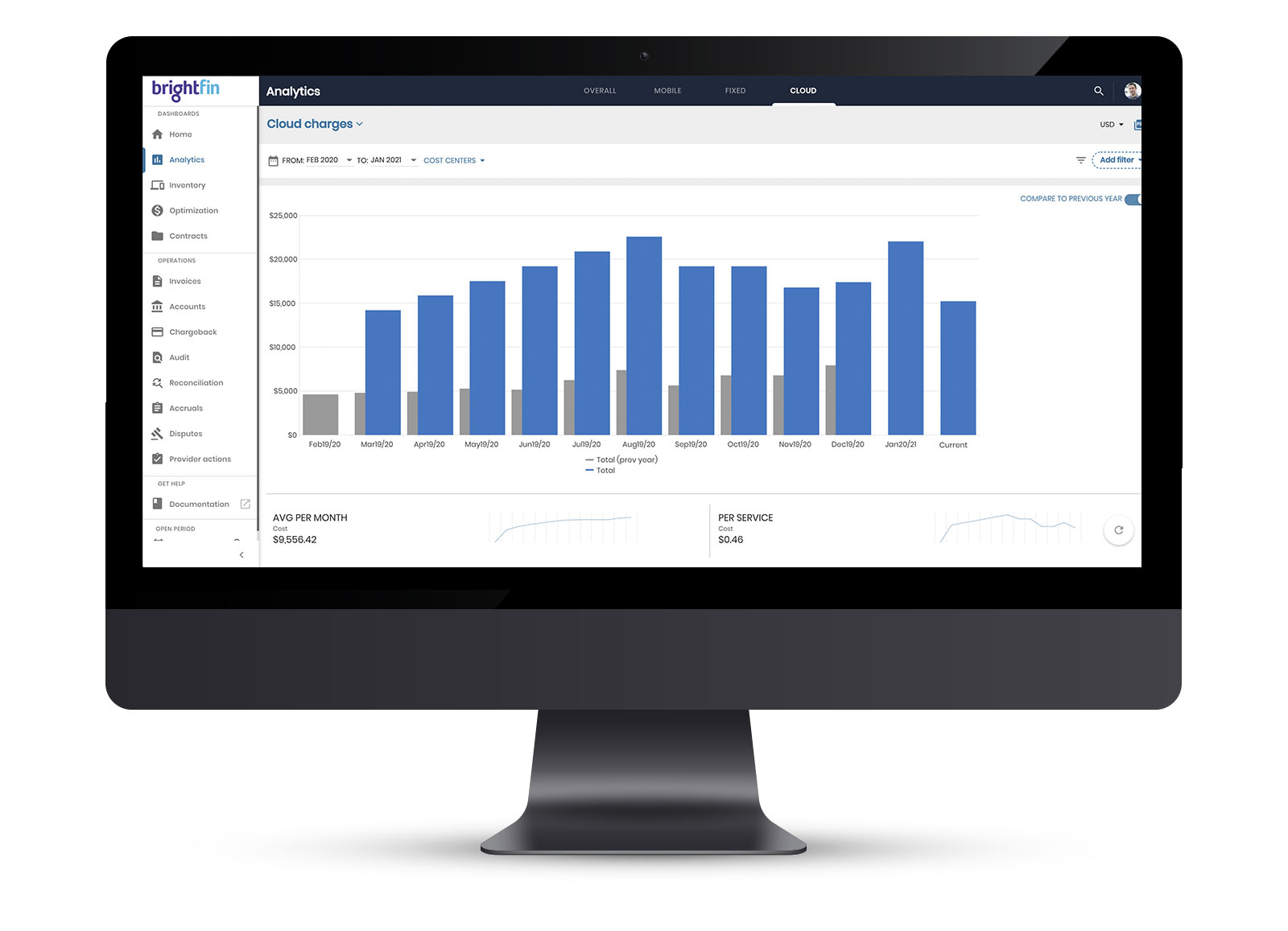Introduction to Cloud Spend Management
Companies are allocating more of their resources to integrating cloud services because of the incredible benefits that they offer over traditional on-premise and other heavy infrastructure services. All this increased usage leads to higher spend and the need for cloud spend management. But if companies can properly utilize these new tools, they can see incredible benefits:
- Cloud-driven companies can listen to their customers and innovate faster, often delivering benefits quicker to customers versus companies who have on-premise solutions and require more technical expertise to update their software
- Companies can adopt many different providers and utilize a multi-cloud approach to streamline their services.
- Cloud services can be more flexible and scalable solutions to companies.
Analysts estimate that only 15% of current IT spend is in the cloud, but 90% of businesses have implemented cloud systems, showing the room for growth in cloud spend. In fact, IT budgets are expected to increase by their largest in a decade, paving the way for companies to continue rapidly adopting different cloud service providers.
As cloud adoption becomes a core strategy for building and scaling companies, leaders are looking at cloud services as investments. As IT budgets increase, companies want to make sure that they’re optimizing their cloud spending by negotiating better deals, streamlining their providers where possible, and looking at other saving plan options.
The proliferation of cloud computing services has become a cost-benefit exercise for IT leaders. With each service offering a solution to a specific use-case it can quickly become overwhelming for a company to know how much of a given plan they are actually using. Gaining cost transparency by knowing exactly what cloud services your organization is paying for and comparing usage rates can help optimize your company’s portfolio of services and reduce excess spend.
1 – Cloud Provides Serious Advantages
Paying for cloud services has quickly become a need-to-have in this economy. Cloud services offer a variety of competitive advantages, business efficiencies, and cost benefits to organizations that adopt them. As companies continue to transition to an international and hybrid workforce, the need to provide flexible and scalable solutions that can be accessed by employees across devices is critical to productivity.
On the other end, customers are expecting quick and seamless user experiences without any delays caused by server errors, data storage issues, or outages. Adopting cloud services can be a great way to optimize cash which generally bill as pay-as-you-go or monthly subscription plan and reduce the need to outlay a significant amount of capital upfront that other traditional on-premise solutions require. These are some of the driving forces for companies deciding to adopt cloud services in 2022 and beyond. Gartner estimates that global cloud spending will hit over $482 billion in 2022, over a 50% year-over-year increase compared to cloud spending in 2020.
2 – Organizations are Adopting Multicloud Environments
Many organizations, now realizing the benefits of the cloud, have started to adopt multi-cloud environments. These environments consist of a mix of public and private clouds. Public clouds are generally cheaper to run and may share computing resources among different customers (even if the data is handled separately). On the other hand, private clouds are more customized and give the company much more authority on what can be accessed and by whom. Private clouds are typically used for regulatory and security purposes in many companies.
The multi-cloud environment allows companies that are using many different providers to streamline their services and deliver a seamless user experience without adding too much extra stress on the back-end stack of the technology infrastructure. Companies are able to use different services from a variety of suppliers and can simply hide the services that they don’t want the customer to see in their private clouds.

3 – IT Leaders Need to Optimize Cloud Costs and Usage
One of the best ways IT leaders can differentiate themselves from the competition is by optimizing their cloud costs and usage. Knowing what cloud services your company is currently paying for, how much you’re paying for these services, and understanding the different suppliers you’re using can help optimize costs and streamline services. The simple truth is that many companies really don’t know the true spending and usage of their cloud services. And as these companies grow, those excess monthly subscription fees can become a substantial piece of missed profits.
Cloud Spend Management with brightfin
brightfin has out-of-the-box integrations with Amazon Web Services, Microsoft Azure, and Google Cloud, bringing all of your major cloud accounts into one IT expense platform. With all of your accounts in one place, our analytics tools make it easy to compare usage, costs, and charges across vendors and drill down for more detailed granularity to break each down by internal user group. Use brightfin’s cloud expense management tool to actively reduce cloud costs that directly impact the bottom line, make your team more productive and get full cloud transparency across your organization.






